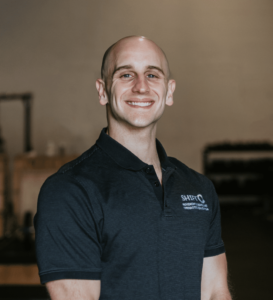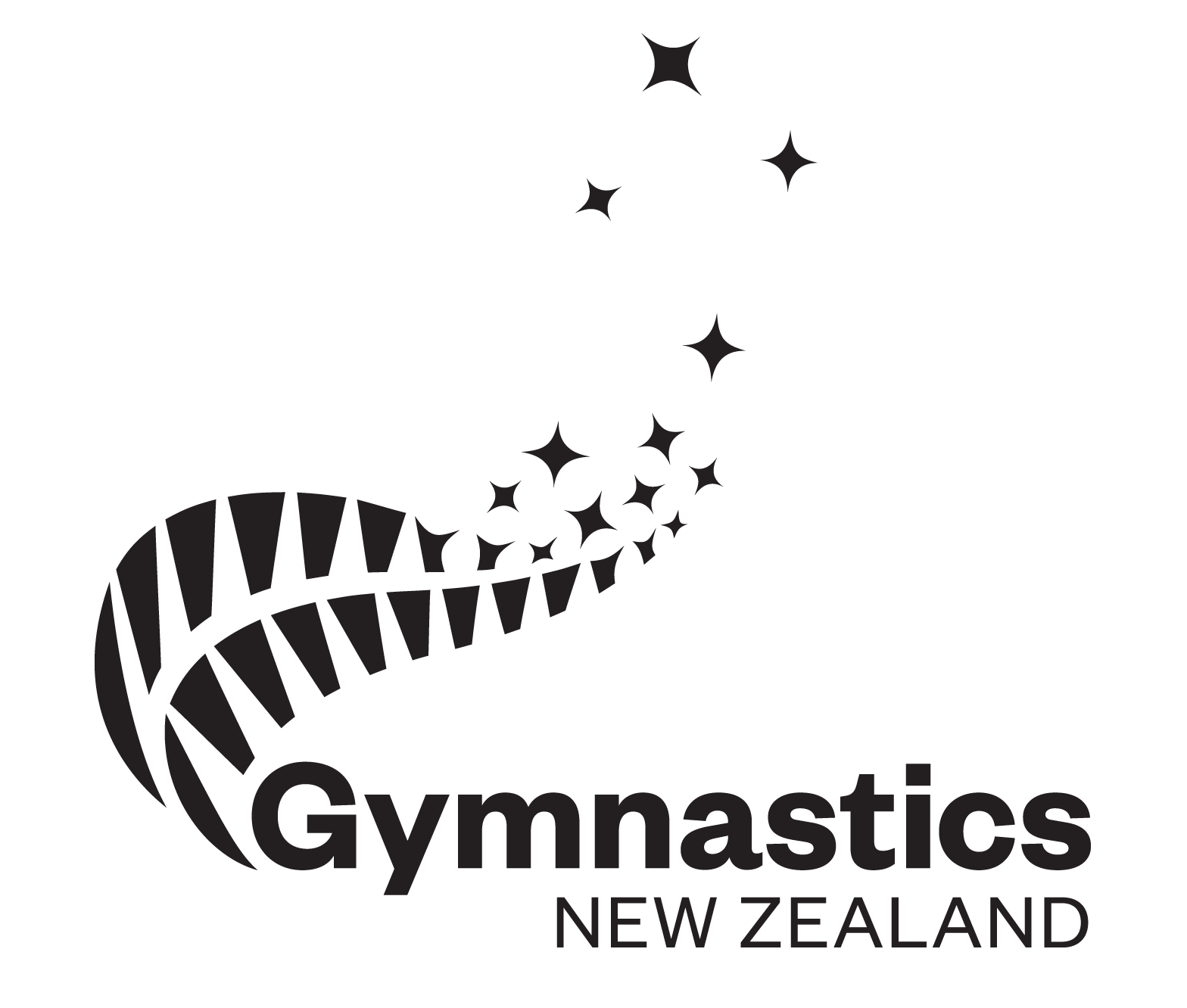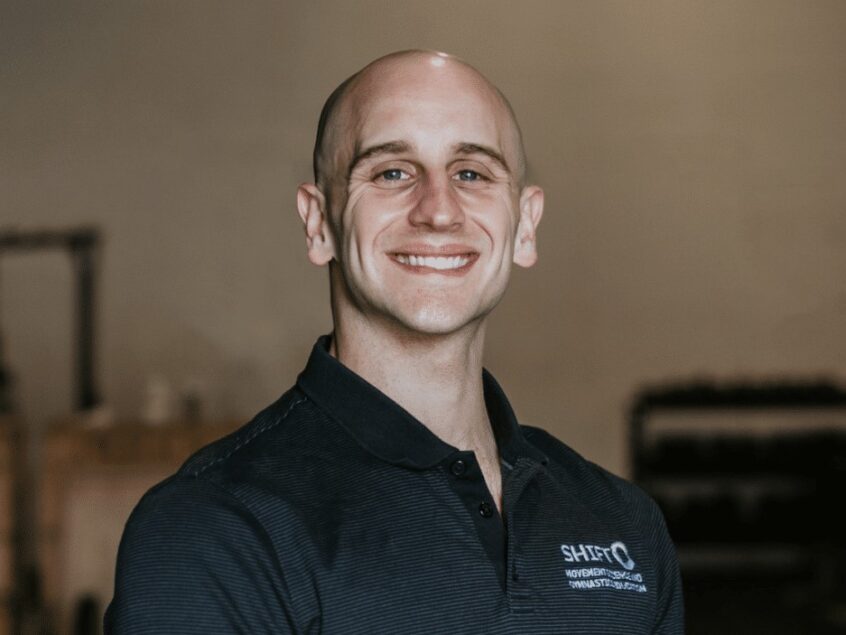High performance in gymnastics doesn’t have to come at the cost of physical and mental suffering.
That was the message American gymnastics coach, strength trainer, and renowned physiotherapist and injury specialist Dr Dave Tilley delivered to an online audience of New Zealand gymnastics coaches during a highly informative recent webinar. This theme was woven through the three lectures in the workshop: Athlete Development, Periodisation and Strength and Conditioning.

While there was no doubt that in a high-risk sport like gymnastics the “higher you go the tougher it gets”, Tilley is adamant placing wellbeing at the centre of a programme is the key to sustained success.
“Gymnastics definitely comes with its share of bumps and bruises, injuries and tough moments,” says Tilley, an expert in gymnastics sports medicine who has worked with many of the world’s highest-level gymnasts over the last 10 years.
“But I really believe you can reach high-level goals while still maintaining health and wellness.”
Tilley’s stance on wellbeing is both relatively recent and born from a period of self-reflection.
The gym where he coached had always generated strong competitive results, and so operated under the assumption it was doing things well. Beneath the surface, though, all was not well. Far from it.
“It really was not a healthy environment,” admits Tilley. “We quickly found out that our culture needed some serious improvements. The athletes were not happy and not motivated, and the parents weren’t exactly happy with the injury rate and the frustrations the athletes were having. And to be very frank the coaching staff, including myself, were extremely burned out.”
So the club changed its approach, prioritising wellbeing while ditching a “hardcore aggressive mentality” and leaving behind the outdated notion that gymnastic training was a race to develop athletes in time to peak at 16.
Tilley now advocates for a “priority filter” that places health first, followed by “building great humans” and then, finally, “building great gymnasts”.
“One of the hardest things in our sport is making sure athletes have a lens of longevity – so that the decisions we make are serving their goals but at the same time keeping them as healthy as possible and really maintaining their wellness”, says Tilley. “There is a way to do both – to enjoy the environment and have fun and work hard at the same time towards your goals.”
Tilley breaks the development cycle into stages. From the ages of three through to ten the focus should be on enjoyment, and training demands should not detract from a normal childhood.
“It drives me nuts to see some gyms that have six to eight-year-olds training 15-20 hours a week. That is just madness, absolute madness. They need a childhood. You really have to set the foundations about it being about fun and enjoyment and developing in a normal and healthy way.”
Caution also needed to be exercised with gymnasts aged 11-14 as they would be encountering numerous pressures in life while growing and going through puberty. “Pushing someone to be at a very high level at 12 or 13 is very, very risky in terms of what the long tail of that looks like. If you move people too fast when they are not ready it really only leads to headaches.”
The goal should be to get through the early teen period safely and well so gymnasts could thrive at 15-18 and beyond. Recognising and catering for athletes’ needs as people was the key to establishing a positive gym culture that would generate sustained success.
“There are humans who do gymnastics, there are not gymnasts who happen to be humans,” says Tilley. “Make sure you treat them that way.”
For coaches, building trust is vital. “No one cares how much you know until they know how much you care. People need to understand that you are there as a human first before you talk about skills and progression. It is not only about you affecting the athlete, it is about you working on yourself.”
A focus on wellbeing meant treating mental health with the same importance as physical health.
“Emotional pain for some reason is just not treated the same way in our society. Athletes are told they ‘gotta be tougher, harden up and push through’. That is so devastating. Then they feel something is wrong with them. Mental pain should be treated the same way as a physical injury – treatment to deal with acute phase and then support for recovery.”
“The same way that people getting hurt on the floor sometimes is the reality of a high-risk sport, it is also the reality that you can deal with anxiety, depression, and loneliness. That is very, very normal, and okay. I have literally never met a single gymnast who didn’t have a mental block.
“So we have to proactively work with mental health professionals and try to establish this framework early in their life if we want a really good long-term career where someone is as healthy and successful as possible.”
Nutrition, sleep, recovery, and physical preparation are key to a wellness-centred approach – however, an oft-overlooked factor is the importance of social connections and peer groups. Research showed that social groups could be either the biggest cause or biggest reliever of stress. The right group of friends can be amazing but a not right group of friends can be toxic. A supportive environment that helped people get through the tough times was vital.
“You want to build an environment that motivates and inspires people, not lead by fear and intimidation. Fear and intimidation does work but it destroys things in the long-term. Short-term you might get that result you want, but in the long-term you have just established very broken trust and toxic connections.
Building your culture around a social group that helps each other out, helps people with their problems and are here for each other is vital.”
If you missed out on attending the Dave Tilley workshops and would like to know more, please contact Amy Nield.

